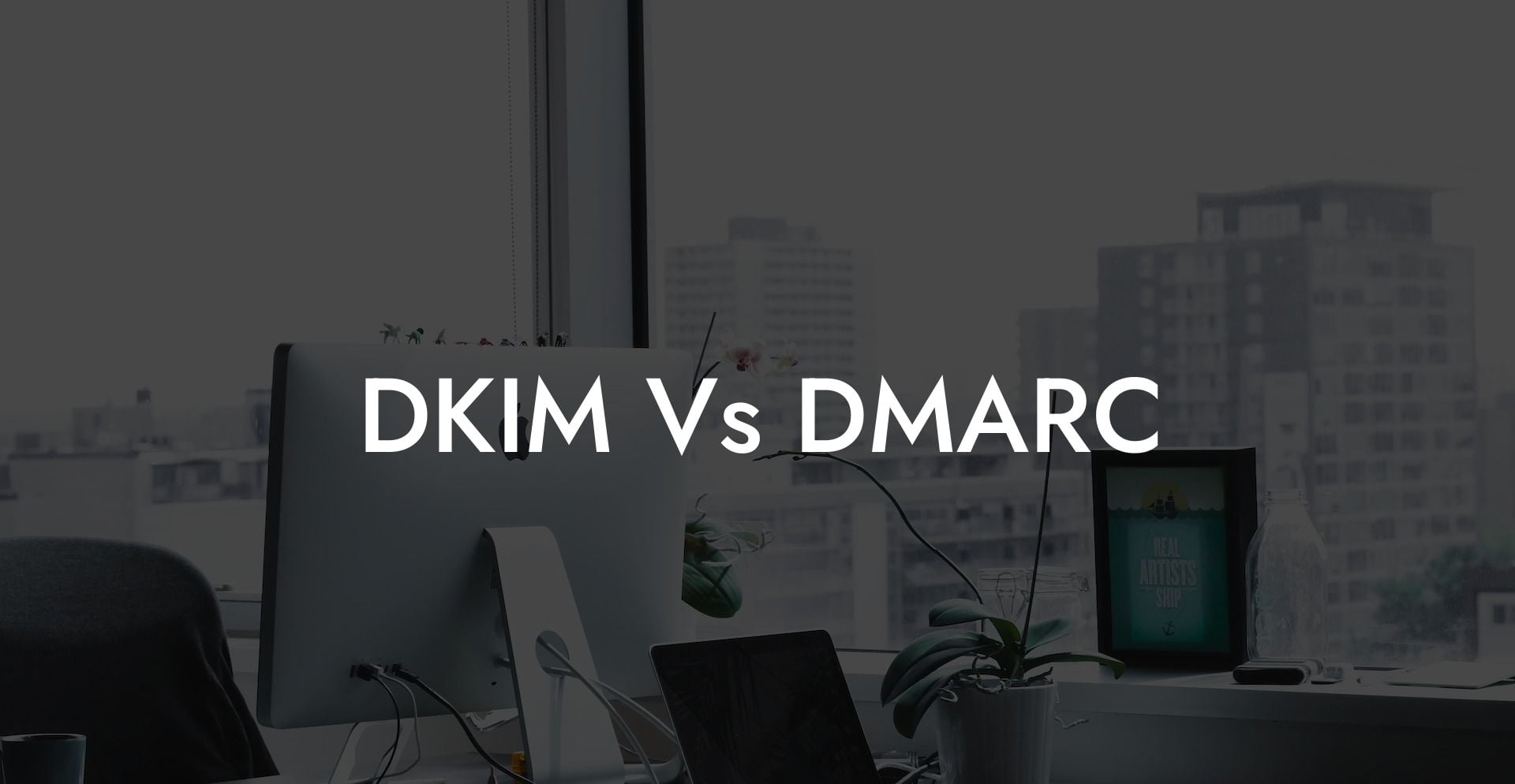In the world of cybersecurity, authentication and validation are critical components to ensure the security and reliability of communication channels. Two of the most popular email authentication standards are DKIM and DMARC. As an individual concerned about securing your email communications or as a business professional responsible for maintaining your organization's email system, understanding the differences between these two methods will be essential. So, let’s dive in and explore DKIM Vs DMARC to help you make informed decisions about email security.
DKIM Vs DMARC Table of Contents
What is DKIM (DomainKeys Identified Mail)?
What is DMARC (Domain-based Message Authentication, Reporting, and Conformance)?
What is DKIM (DomainKeys Identified Mail)?
DKIM is an email authentication method that enables the receiver to check if an email was sent and authorized by the owner of the sending domain. It works by adding a digital signature to the email header, which the receiving email server validates using the public key published in the sender's DNS record.
Benefits of DKIM
- Increases email deliverability and reduces the risk of false-positive spam filtering.
- Improves domain reputation with anti-spam systems, ensuring higher email delivery rates to the inbox.
- Protects against email spoofing by verifying the sender's identity.
What is DMARC (Domain-based Message Authentication, Reporting, and Conformance)?
Protect Your Data Today With a Secure Password Manager. Our Top Password Managers:
DMARC is an email authentication and reporting protocol that builds upon both DKIM and SPF (Sender Policy Framework) to provide an additional layer of protection. It allows domain owners to define rules on how their domain should handle emails that fail authentication, including reporting, blocking, or rejecting them as spam.
Benefits of DMARC
- Provides additional security against email spoofing and phishing attacks.
- Improves email delivery rates by defining clear policies on how to treat unauthenticated emails.
- Offers visibility and control over your domain's email usage with reporting features.
DKIM Vs DMARC: Key Differences
While DKIM and DMARC are both email authentication protocols, they serve different purposes and complement each other in a comprehensive email security framework.
Authentication Method
- DKIM: Adds a digital signature to the email header that can be verified using a public key from the sender's DNS record.
- DMARC: Builds upon DKIM and SPF, providing a policy-based system that determines how unauthenticated emails should be treated.
Focus
- DKIM: Ensures email authenticity and integrity by validating the sender's identity and verifying that the email content has not been tampered with during transmission.
- DMARC: Primarily aims to prevent email spoofing and phishing attacks by providing clear policies for handling emails that fail authentication.
Reporting and Management
- DKIM: Does not offer any reporting or management functionality.
- DMARC: Provides various reporting and management features that help domain owners gain better visibility and control over their email domain usage.
DKIM Vs DMARC Example:
Imagine you manage an online shopping website that sends out regular newsletters to its subscribers. With the business growing, you witness increased email spoofing attempts and potential phishing attacks targeting your customers. Implementing DKIM and DMARC together can help you bolster your email security measures.
Firstly, you would set up DKIM, digitally signing each outgoing email, ensuring that recipients can verify the email's sender and authenticity. This builds sender credibility and reduces the chances of your emails ending up in the spam folder.
Next, by implementing DMARC, you define and publish policies on how your domain should handle emails failing DKIM and SPF checks. This extra layer of security empowers you to prevent fraudulent emails, attempting to impersonate your domain, from reaching your customers’ inboxes.
With a combined implementation of DKIM and DMARC, you fortify your email domain against spoofing, phishing, and spam, providing a safer environment for your customers.
Understanding the differences between DKIM and DMARC is key to strengthening your email security and protecting your domain from potential threats. Implementing both protocols enhances email authentication, ensuring that you protect your brand reputation and strengthen customer trust in your communications. If you found this guide helpful, feel free to share it with others seeking insights into email security. And don't forget to check out our other comprehensive guides on Voice Phishing to stay well-equipped on cybersecurity matters.
Protect Your Data Today With a Secure Password Manager. Our Top Password Managers:















